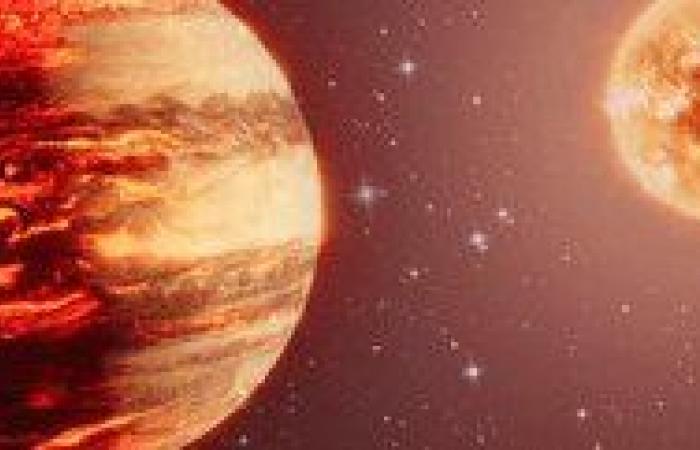Of eight companions [2] observed, the research team was able to demonstrate that five objects are brown dwarfs, still little-known substellar objects, halfway between the planet and the star [3]. The latter are very difficult to detect given their low luminosity, and even more so near stars a thousand times brighter. In this study, they orbit their stars at distances equivalent to the distance between the Earth and the Sun. A proximity which raises questions about the formation of these objects. Furthermore, some of the observed light fluxes are lower than those predicted by theoretical models. This could indicate that some of these brown dwarfs are binary: they also have a smaller companion in their orbit.
These unprecedented observations were made possible by the combination of two observatories, Gaia from space and the VLTI (Very Large Telescope Interferometer) located on Mount Paranal, in Chile. The Gaia space mission has cataloged hundreds of thousands of multiple systems from space, characterizing their positions and movements. It thus allowed scientists to identify the eight stars to target. On the ground, the GRAVITY instrument, which equips the VLTI, plays the role of a magnifying glass: it is capable of measuring with unequaled precision tiny details of stellar objects [4], but this instrument requires guidance on specific areas. He was thus able to capture the light signals of the eight companions pre-identified by Gaia. The scientists then analyzed the luminosity and mass [5] of these objects and were able to deduce that five of them were brown dwarfs. Until now, these “hidden companions” of the stars have been invisible.
This result, to be published June 20 in Astronomy & Astrophysics, is the first glimpse of the power of the Gaia-GRAVITY combination. The conclusions of this study offer new perspectives for understanding the formation of these atypical celestial objects that are brown dwarfs, and could also shed light on the formation of massive exoplanets and planets in our solar system.
Image of a brown dwarf orbiting a bright star © ESA
Bibliography
Combining Gaia and GRAVITY : Characterising Five New Directly Detected Substellar Companions. T. O. Winterhalder, S. Lacour, N. Pourré, C. Babusiaux et al. Astronomy & Astrophysics, le 20 juin 2024.
[1] The French laboratories for this study are the Laboratory for Space Studies and Instrumentation in Astrophysics (Paris Observatory – PSL/CNRS/Sorbonne Université/Université Paris Cité), the Grenoble Institute of Planetology and Astrophysics (CNRS/ Grenoble Alpes University), the Marseille Astrophysics Laboratory (Aix-Marseille University/CNES/CNRS) and the Lagrange laboratory (CNRS/Observatoire de la Côte d’Azur/Université Côte d’Azur).
[2] A companion is an object orbiting a star.
[3] One of the differences between the star and the planet is the ability to generate energy, and therefore to emit light. A star is massive enough to burn hydrogen in its core, something a planet is not capable of. In the case of the brown dwarf, it is not massive enough to burn hydrogen, but is still much more massive than a planet. For example, a brown dwarf is approximately thirty times more massive than the planet Jupiter, but approximately thirty times less massive than the solar system’s star, the Sun.
[4] GRAVITY uses a process called interferometry: the simultaneous orientation of several telescopes on the ground pointing at a single star allows a very fine resolution which makes it possible to observe very small and low-luminosity objects.
[5] Luminosity and mass are two key indicators for understanding how the object cooled over time, and thus tracing its formation.
Last modified June 24, 2024







